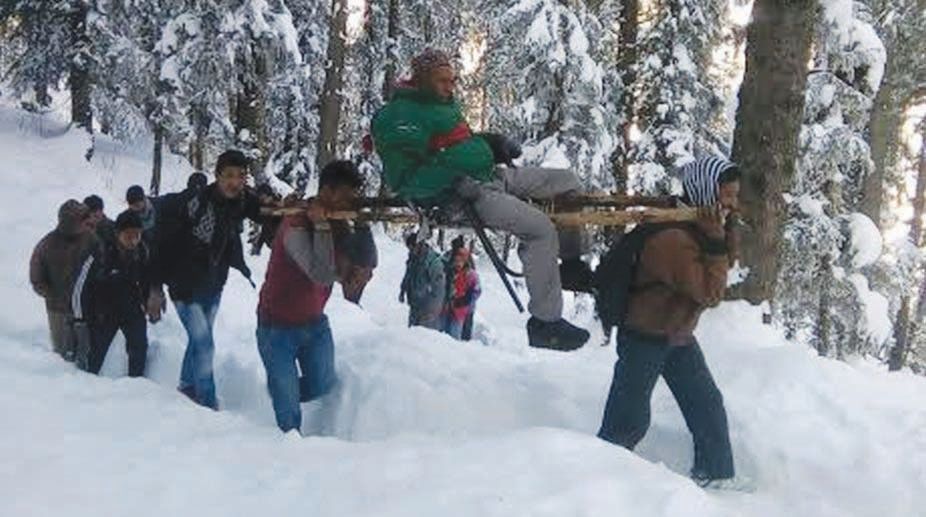J&K CM Omar Abdullah lays stress on Himachal Pradesh-type laws to protect agricultural land
The Chief Minister noted that Himachal Pradesh has adopted a strict policy in this regard and stressed the adoption of a similar policy in J&K.

A file photo of last winter from uphill Mandi district where a patient was being taken on a palanquin like structure to hospital. (Photo: SNS)
Himachal Pradesh government’s objective to give equitable access of medical emergency services to people may get wings if the proposed free Heli-ambulances take off to airlift patients from remote and tribal areas with negligible health facilities.
According to officials, the proposal seeks to fill the gap in free medical emergency services in HP, which had started with the launch of 108 ambulances in December, 2010. The health services in the remote areas of HP are very poor with scant doctors, specialists and facilities.
Advertisement
The people in interiors have to travel long distances to avail better health facilities in emergency, or sometimes in routine. The snow in winters double up their problems for road blockade.
Advertisement
The hill state has two tribal districts of Kinnaur and Lahaul Spiti, a tribal belt in Chamba (Bharmour) and a large number of interior areas, which are not accessible by road. The Lahaul Spiti district and Pangi belt of Bharmour, Dodra Kwar of Shimla, Bara Banghal area of Kangra and parts of Mandi and Kullu district are the toughest.
The Lahaul valley of Lahaul Spiti district is cut from rest of the world and from Spiti for around five months in winters, when snow covers the 13,051 feet high Rohtang Pass ahead of Manali and 15,060 feet high Kunzum Pass ahead of Batal.
This time around, the people in landlocked area are almost hapless as even the helicopter services to tribal area in winters are not very helpful, as the flights are irregular.
“The government will have to work out modalities of the Heli ambulances as per need. The service should be pressed in service regularly or it will fail in purpose,” said tribals.
But there is another aspect too. People living in villages far from the road will still face problems as the patients are to be taken on the back down the hill tracks to reach the 108 ambulance in routine.
More often than not, the posturing hurts the patients and it could be risky while on way, especially in case of the pregnant women. Sometimes, the people walk for 10-20 kilometres to take the patients on a palanquin like structure to the nearest road head.
All this could have, however, been avoided had the government okayed the proposal of ‘dolis’ (flexible stretchers, suiting the emergency) to transport patients in such a situation, linking it with 108 service.
“The service providers of 108 ambulances, GVK-EMRI, had identified 160 villages in ten districts, barring tribal areas, where people have to walk for over an hour to reach the road head. But the same has been hanging fire despite the fact that it required little funds and modalities,” said official sources.
Advertisement